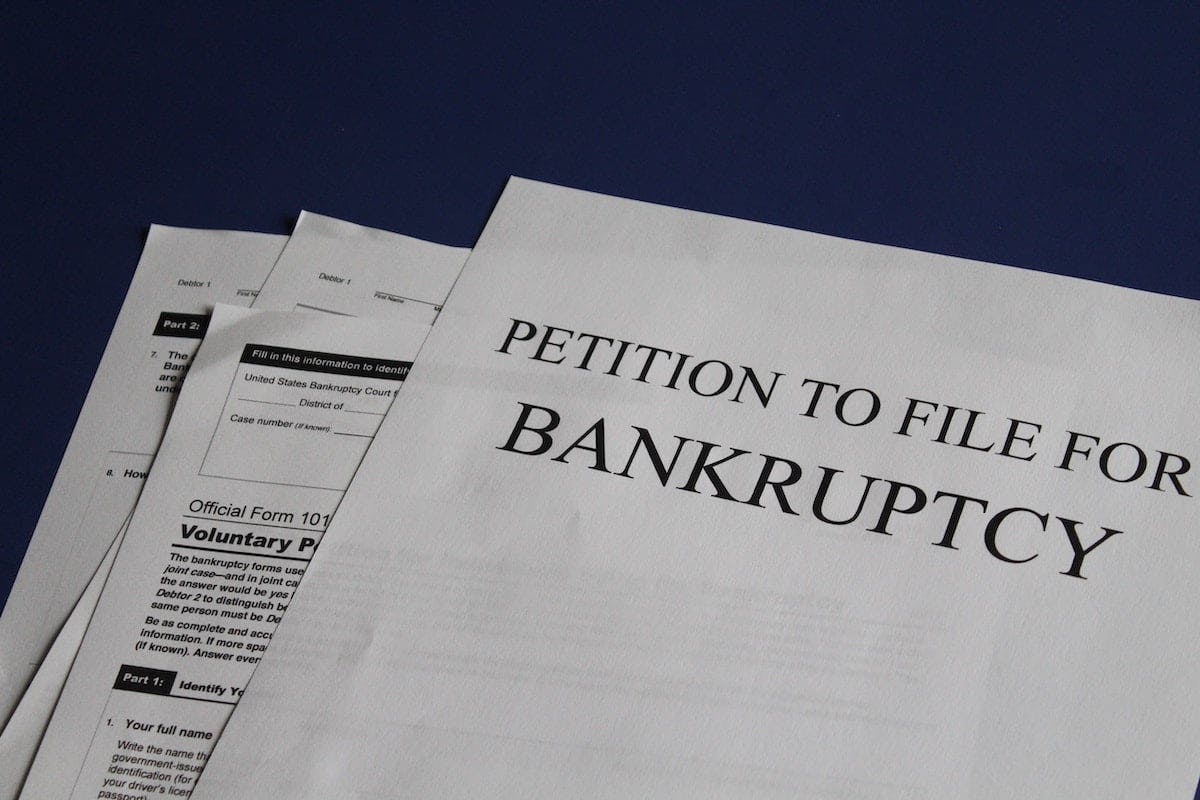How Many Times Can You Declare Bankruptcy in Canada?
By Yuri Sychov | Published on 19 Aug 2023

Declaring bankruptcy can be a last resort for those unable to pay their debts. This legal process provides much-needed relief, offering an escape from the heavy debt burden. While it can help you to start with a clean sheet, there are consequences associated with it. And the more you use this method, the more severe consequences you will face. In this article, we will explore how many times exactly you can declare bankruptcy in Canada, what consequences you will face, as well as alternatives you can use to avoid bankruptcy altogether.
What Are the Legal Requirements for Declaring Bankruptcy in Canada?
To be eligible to declare bankruptcy in Canada, you must meet the criteria of being an insolvent person. This means owing at least $1,000 worth of unsecured debt that cannot be paid off on time and having more liabilities than assets. Additionally, one has to live or conduct business in Canada. Otherwise, they are ineligible to file a personal bankruptcy claim. All bankruptcies handled by individuals are supervised by Licensed Insolvency Trustees (LIT) as per federal regulations.
More than 24,586 individuals filed for bankruptcy in 2022, having $2,378,918,622 in total liabilities, so understanding the process and implications of bankruptcy has become vital for many facing financial hardships. Unfortunately, there are also instances of filing a 2nd, 3rd, 4th, and even 5th bankruptcy.
According to Canadian Consumer Debtor Profile 2021 Report, 21% of debtors who filed a consumer proposal or bankruptcy had previously gone through the bankruptcy process, and among these repeat filers, 86% filed only one bankruptcy. It means that about 14% of people filing for bankruptcy for the first time will encounter challenges severe enough to push them toward subsequent bankruptcy.
What’s the Limit on Declaring Bankruptcy in Canada?
As you have probably guessed, there is no legal limit for declaring bankruptcy in Canada. Theoretically, you can file bankruptcy 10 or even more times, but in reality, it will be almost impossible to regain financial stability or credibility with lenders after several declarations. Lenders don’t want to accept unnecessary financial risks and provide loans to people with several bankruptcies on their credit history.
The more bankruptcies you have, the longer they will stay on your credit record. Plus, it will be more difficult to get a discharge. Now let’s look at the automatic discharge requirements for first and subsequent bankruptcies as they intensify and demand more of individuals with repeated filings.
| Bankruptcy # | Automatic Discharge Requirements | Impact on Credit Score |
| 1st | 9 months (no surplus income) 21 months (if you have surplus income) | Stays on credit history for 6 years |
| 2nd | 24 months (no surplus income) 36 months (if you have surplus income) | Stays on credit history for 14 years (previous bankruptcy also stays on credit history for 14 years after discharge date) |
| 3+ | No automatic discharge is available. Discharge through court only | Stays on credit history for 14 years (previous bankruptcies also stay on credit history for 14 years after discharge date) |
It is essential that your trustee, creditors, and the Office of the Superintendent of Bankruptcy (OSB) all agree to approve your automatic discharge. Plus, you must attend financial counselling sessions, and your income tax debt should amount to no more than $200,000. This figure also needs to be lower than 75% of your total debt (Bankruptcy and Insolvency Act Sec. 172.1). Most bankruptcies eligible for automatic discharge are approved. However, if you are not approved for automatic discharge, you will have to obtain discharge through court.
What is Surplus Income in Canada?
In Canada, the concept of surplus income plays an integral role in the bankruptcy process. It works on the premise that those who earn more are obliged to make larger contributions towards their insolvency. The government has implemented net monthly income thresholds to ensure a comfortable lifestyle for all citizens. If your earnings surpass this threshold, you must pay surplus income payments.
Depending on the size of your family, there are different limits for surplus income. The bigger your household is, the more you can keep in terms of extra earnings. Plus, these thresholds get adjusted annually due to inflation. You can check 2023 thresholds at the Canada.ca website.
How to Avoid Bankruptcy in Canada
You can use many alternatives to prevent bankruptcy in Canada, but we will briefly mention the most effective ones. Remember, preventing bankruptcy is always better than dealing with its consequences.
Consumer Proposal
One of the most obvious alternatives is the consumer proposal is often the best way for Canadians struggling with debt to reduce their financial burden. Not only does it decrease your debts significantly, but unlike bankruptcy, its impact on credit reports remains lower while still allowing you to retain valuable assets such as property or cars.
This legally binding agreement allows you to pay back only part of what you owe your creditors over five years — administered by an experienced LIT. The process starts with working out a proposal, offering either reduced payments or extended time periods on repayment, but never exceeding five years total. Payments are handled through the LIT, who will then distribute them accordingly among each creditor involved. This method is often preferred by creditors as it ensures regular and reliable income rather than waiting indefinitely for full payment, which may never arrive.
Consumer Credit Counselling Services
Consumer Credit Counselling Services can be a great alternative to bankruptcy in Canada. These services are designed to help individuals address their debt and get back on track financially while also reducing or eliminating all interest from unsecured debts.
It starts with an individual counselling session where you will meet with a certified credit counsellor who’ll take the time to understand your financial situation, such as income, expenses, and debts, before creating a tailored plan of action for dealing with them effectively. This may sometimes involve negotiating lower payments or even reduced interest rates directly with creditors.
Other Alternatives to Bankruptcy
Debt consolidation loans can help simplify financial management, allowing debtors to bundle multiple high-interest debts into one loan and secure a lower interest rate with just one monthly payment. This approach is particularly useful for those struggling with credit card balances.
Alternatively, informal debt settlements offer the chance to negotiate directly with creditors and potentially reduce what’s owed, though it requires strong negotiation skills and isn’t always successful. Homeowners may want to consider home equity loans or lines of credit as another option that allows them to tap into their house’s value to clear higher-rate liabilities faster.
Those who have a stable income but still face high interest rates could try looking for low interest credit cards, or balance transfer offers instead while selling off some assets. If you’re lucky enough to possess any, this might provide immediate relief from bankruptcy risk, although long-term consequences should be considered first before making such decisions.
FAQs About How Many Times Can You Declare Bankruptcy in Canada
Technically, you can declare bankruptcy in Canada as many times as you need. However, getting a discharge from each subsequent bankruptcy becomes progressively more difficult. Starting with a 3rd bankruptcy, you are not legally allowed to get an automatic discharge, and you will need to obtain a discharge through court. The problem is that the court may refuse to discharge you from bankruptcy or impose additional financial sanctions.
Yes, you can file for bankruptcy a second time in Canada, but it will be more difficult to get your discharge. The main difference between the 1st and the 2nd bankruptcy is that you will be automatically discharged 24 months (instead of 9 months) after filing if you are not required to pay surplus income payments and 36 months (instead of 21 months) if you have a surplus income (Bankruptcy and Insolvency Act Sec. 172.1 (1) (b)). Plus, it will cost you significantly more than the 1st bankruptcy, and both bankruptcies will stay on your credit history for 14 years (instead of 6 years for the 1st bankruptcy).
Yes, you can file for bankruptcy 3 times, and even more, in Canada. However, you won’t be eligible for automatic discharge. The only way to get a discharge for the 3rd and subsequent bankruptcies is through court. The court may refuse, suspend, approve a discharge or grant a conditional discharge, meaning that you will be required to comply with terms directed by the court, such as paying additional penalties.
The effects of not being discharged from bankruptcy in Canada can be far-reaching. If a person is still bankrupt, they can borrow no more than $1,000 without informing the lender about their current status (Bankruptcy and Insolvency Act Sec. 199 (b)). Plus, if a person doesn’t receive a discharge from bankruptcy, the trustee will request to be discharged after dealing with all relevant files. Once this happens and the stay of proceedings is removed, creditors can pursue their debt as if no bankruptcy had taken place.
